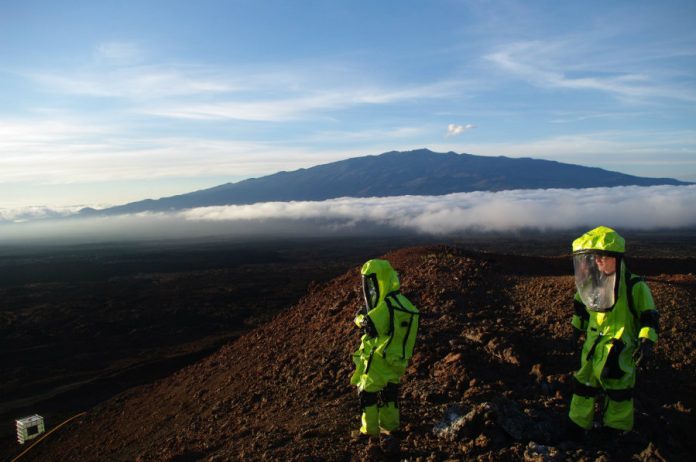
It’s no secret that sending humans to Mars is currently the primary goal of NASA and every aerospace company. That’s why NASA is preparing its astronauts for the risks they might face when setting foot in The Red Planet. They are training at the HI-SEAS simulated Mars habitat.
The Hawaii Space Exploration Analog and Simulation (HI-SEAS) is an analog habitat for human spaceflight to Mars located on the slopes of Earth’s largest volcano, the Mauna Loa in Hawaii. Volcanism is a distinct Mars-like feature, so it will help cosmonauts familiarize with the planet’s rough environment.
Mars is home to the largest volcanic mountain in the Solar System. The Olympus Mons rises 16 miles (25 km) above the Martian plains, while the Mauna Loa is only 2.6 miles (4.1 km). The space travelers will also encounter extreme cold, lack of water and solar radiation.

HI-SEAS crews have completed four missions
Mauna Loa’s remoteness and rocky red ground of broken lava are characteristics that make it an ideal place for HI-SEAS teams to practice for the harsh conditions on Mars. The latest HI-SEAS mission began on August 29, 2015, and ended on Monday.
The six-person crew lived in a 1,200 square feet (111 square meters) habitat for exactly one year. They remained in contact with mission controllers and family by email, the Internet, and audio links. When going outside, they used simulated full-body spacesuits.
During the simulated Martian exploration missions, the astronauts carried out geology studies similar to the ones they’ll do on Mars. They made local topography maps and gathered samples for analysis.

Culinary (traditional space food like freeze-dried items) and psychological (crew dynamic and behavior) aspects were its primary focus of study.
Three more missions followed. Another of four months, one of eight months, and the last one of an entire year.
Space tech in development
As they get ready, NASA and several companies are developing the technology required for humans to arrive and then colonize Mars. Earlier this month, SpaceX announced it had sent its Mars rocket engine to a test site. The company expects its first Mars flight with passengers to launch in 2024.
Lockheed Martin is currently developing technologies for NASA’s Orion spacecraft to help send humans to Mars in the 2030s. The space agency also has its Curiosity rover searching for organic compounds on the Martian surface and designed the ROCKY exercise device to improve astronauts’ health during their trip to Mars.
Plus, NASA Deputy Associate Administrator Bill Hill revealed just days ago that the space agency would not extend funding for the International Space Station (ISS) beyond 2024. That year, NASA expects to leave low-Earth orbit and go to Mars. There’s no turning back.
Source: TIME











